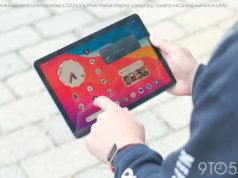The Android smartphone ecosystem is hotly contested, so we’ve ranked the devices to make your buying decision a bit easier.
Apple may have kick-started the smartphone revolution when it launched its very first iPhone back in 2007, but it was Google’s Android operating system that truly took it mainstream.
With an open platform and multiple manufacturers using the operating system, Android was always destined for greatness. Today, Android is easily the biggest mobile OS in Australia.
With only a couple of exceptions, all the companies that were making mobile phones before iOS was launched now run Android.
Samsung, Sony, LG, HTC, Huawei, Google and Motorola all wave the Android flag proudly on their devices.
Still, the many variations in screen size, processing power, software features and design makes finding the best Android phone for you extremely tough.
To help find the best Android phone for you, we’ve rounded up the best Android handsets out there today, rating the phones on hardware performance, OS upgrade potential and, of course, how shiny and nice they are to have and boast about to work colleagues.
So here they are – the best Android phones money can buy in 2018 – for many, many different reasons.
Sony’s Xperia Z5 Premium was the first smartphone in the world to boast a 4K display. Now, the electronics giant has followed it with another magnificent 4K-ready phone in the Sony Xperia XZ Premium.
As you would expect, its 5.46-inch UHD display is truly stunning, now also boasting HDR’s wider colour gamut for truly breathtaking clarity and vibrant images all round.
The phone itself is quite impressive in terms of specs, with 4GB of RAM, a Snapdragon 835 processor, 64 GB of storage (microSD up to 256GB), a 3,230 mAh battery, a water resistant build and it’s also got Sony’s unique side-mounted fingerprint scanner.
Though other handsets may have the edge when it comes to raw power, the XZ premium’s incredible 4K screen (which boasts a whopping pixel density of 807ppi) is especially magnificent when used to view photos and video taken with the XZ Premium’s impressive 19MP primary camera. It’s got a dedicated shutter button (which you can half-press to initiate laser autofocus) and is also capable of shooting 720p video footage at a ridiculously slow 960fps. Of course, you can also record 4K footage at 30fps, too.
If there’s one drawback to Sony Xperia XZ Premium, it’s that its unnecessarily huge bezels distract from the amazing screen in front of you. Sony doesn’t really make any meaningful use of the space, either (though there are some front-facing speakers tucked in there), opting to place the fingerprint scanner on the side and use on-screen buttons instead of touch capacitive ones at the bottom.
Still, the Sony Xperia XZ is a seriously slick phone with a jaw-dropping screen (backed by the same Triluminos display technology that powers Sony’s 4K TVs). We recommend loading some 4K HDR footage from YouTube on there and watching your friends get extremely jealous of what this phone is capable of.
While last year’s Huawei Mate 9 was already an incredibly impressive phablet, the Huawei P10 Plus takes everything that phone did well and improves upon it, making it an ideal option for those who don’t like larger-sized handsets.
Like the Mate 9, it has dual cameras (only this time with no camera bumps whatsoever) and photography is rightly the key selling point of the device. At 20MP and 12MP, these lenses combine monochrome and RGB sensors with a creative Wide Aperture mode that makes it relatively easy to achieve pro-level results.
Trust us when we tell you that you will never tire of applying bokeh effects and changing your picture’s point of focus long after it’s already been taken. And, if you want to get even deeper with your photography options, a pro mode lets you adjust ISO levels, white balance and more.
It’s got a speedy fingerprint sensor on the front (one of the fastest we’ve ever tested), a gorgeous QHD display, a textured power button with red edging for added pizzazz, a large battery with fast-charging capability, and thanks to the Kirin 960 processor it inherited from the Mate 9, it performs just as terrifically.
It too uses a machine learning algorithm that learns how you use the phone, effectively creating shortcuts to your most-used features. This makes sure that your handset does not show signs of slowed performance for at least the first 18 months of usage.
While it may not have the name recognition of a Samsung Galaxy S8 or LG G6, it’s hard to imagine anyone spending some time for Huawei’s flagship and coming away wanting. If you’re looking for a phone that takes amazing photos, you’re unlikely to find a better option than the Huawei P10 Plus.
Along with its XL-lent sibling, the Google Pixel 2 boasts what many consider to be the best smartphone camera of 2017, and that’s not all when it comes to the various ways in which the Pixel 2 improves upon the original.
Admittedly, we’re not crazy about its bezel-heavy design, which looks terribly outdated in 2017, but the Pixel 2 does feel more stylish than its predecessor. We even like the two-tone effect on the phone’s rear this time around!
But let’s get back to the camera, which despite being a single-lens setup, has received top ratings from the renowned camera benchmarking team at DxOMark, outperforming most of its dual camera peers with ease.
Though we still don’t know why the Pixel 2 still lacks a microSD slot or why its display is only 1080p, we’re very pleased that Google has delivered a handset with an IP67 rating for water and dust resistance.
If you can overlook its large bezels, missing headphone jack and lack of expandable memory, the Google Pixel 2 is still one of the most powerful handsets on the market.
Read the full review: Google Pixel 2 See the best Google Pixel 2 telco plans See the best Google Pixel 2 outright deals
Huawei has so far released two major handsets this year, both equally capable of incredible photography and backed by premium hardware.
Choosing between the Mate 10 and the Mate 10 Pro really comes down to personal preference. Do you like the Mate 10 Pro’s longer Full HD+ AMOLED screen display more than the QHD IPS LCD display on the regular Mate 10? Do you value the Mate 10’s headphone jack over the ability to take the Mate 10 Pro underwater? With each handset offering a number of tradeoffs, the decision isn’t quite as simple as it would seem.
Still, you’ll be happy to know that both handsets boast fantastic Leica-branded dual camera setups, allowing you to take stunning, professional-level photos from your phone.
The real deal-breaker though, is that the standard Huawei Mate 10 has a microSD card slot, while the Mate 10 Pro does not. If you need the added storage, the Mate 10 is the way to go.
With 2016’s Mate 9, Huawei turned the perception of its products around in a massive way, offering a top-of-the-line premium phablet at an with an attractive price. Now, the Chinese phone maker has delivered an equally impressive follow up with the Mate 10 Pro.
It’s got a stunning 18:9 AMOLED display, which offers richer colours, deeper blacks and a brighter picture than its predecessor, and slim bezels for a modern look and feel.
And, thanks to its partnership with camera powerhouse Leica, Huawei has once again delivered an incredible dual camera array that lets you take professional-looking shots with very little effort. A 12MP colour (RGB) sensor has been combined with a 20MP monochrome sensor to allow for amazing depth-of-field shots and magazine-ready black and white photos.
A. I. is one of Huawei’s key selling points this year, and the Mate 10 Pro features a dedicated NPU (neural processing unit) on its new Kirin 970 processor to automatically adjust your camera settings based on what you’re shooting, from landscapes, food, cakes, plants, sunsets, pets – you name it.
It’s also got a massive 4,000mAh battery which will keep it juiced going for around two days of regular use before needing to be recharged. How many other smartphones can boast that?
Sure, we’re not totally pleased with some of Huawei’s design decisions on the Mate 10 Pro (losing the headphone jack and microSD card slot is not something that sits well with us), but we have to applaud its wonderful photographical features and striking new form factor.
Read the full review: Huawei Mate 10 Pro See the best Huawei Mate 10 Pro outright deals
The LG V30 Plus is a slightly updated version of the original LG V30, only with improved Quad DAC audio, a larger storage capacity and other features. In terms of look and feel though, it’s exactly the same, which is good, because only the LG V30 Plus is available in Australia now.
In our opinion, the LG V30 Plus is an improvement over the already impressive LG G6, which was also released in 2017. It’s got a beautiful design, powerful internals (it’s the first LG phone to use a Snapdragon 835 chipset), a terrific camera and a gorgeous 18:9 QHD+ AMOLED display.
If you love your music, this is the phone to get, with its Quad DAC (digital to analog converter) audio capability offering exceptional sound quality. This phone is more than capable of playing your Hi-Res FLAC audio files and will even make your regular MP3s sound better.






